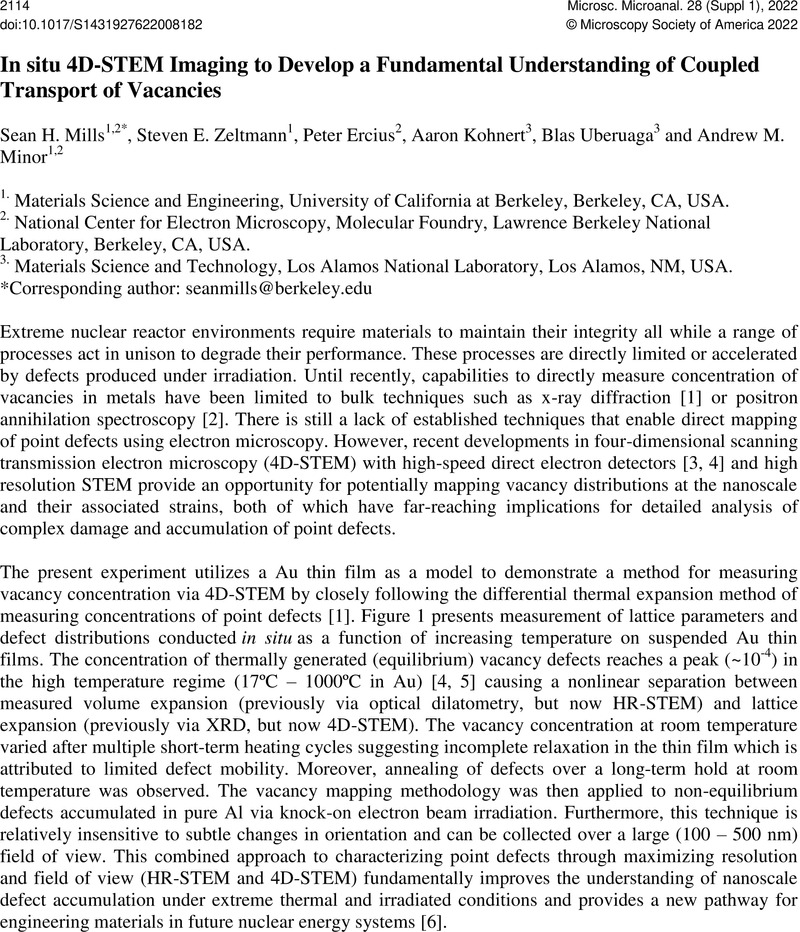No CrossRef data available.
Article contents
In situ 4D-STEM Imaging to Develop a Fundamental Understanding of Coupled Transport of Vacancies
Published online by Cambridge University Press: 22 July 2022
Abstract
An abstract is not available for this content so a preview has been provided. As you have access to this content, a full PDF is available via the ‘Save PDF’ action button.

- Type
- Correlative Microscopy and High-Throughput Characterization for Accelerated Development of Materials in Extreme Environments
- Information
- Copyright
- Copyright © Microscopy Society of America 2022
References
Kraftmakher, Y, Physics Reports 299 (1998), p. 79.10.1016/S0370-1573(97)00082-3CrossRefGoogle Scholar
Pamato, MG et al. , Journal of Applied Crystallography 51 (2018), p. 470.10.1107/S1600576718002248CrossRefGoogle Scholar
Primary support for this work came from FUTURE (Fundamental Understanding of Transport Under Reactor Extremes), an Energy Frontier Research Center funded by the U.S. Department of Energy, Office of Science, Basic Energy Sciences. SEZ was supported by STROBE: A National Science Foundation Science and Technology Center under Grant No. DMR 1548924. The authors acknowledge support by the Molecular Foundry at Lawrence Berkeley National Laboratory, which is supported by the U.S. Department of Energy under Contract No. DE-AC02-05-CH11231.Google Scholar



